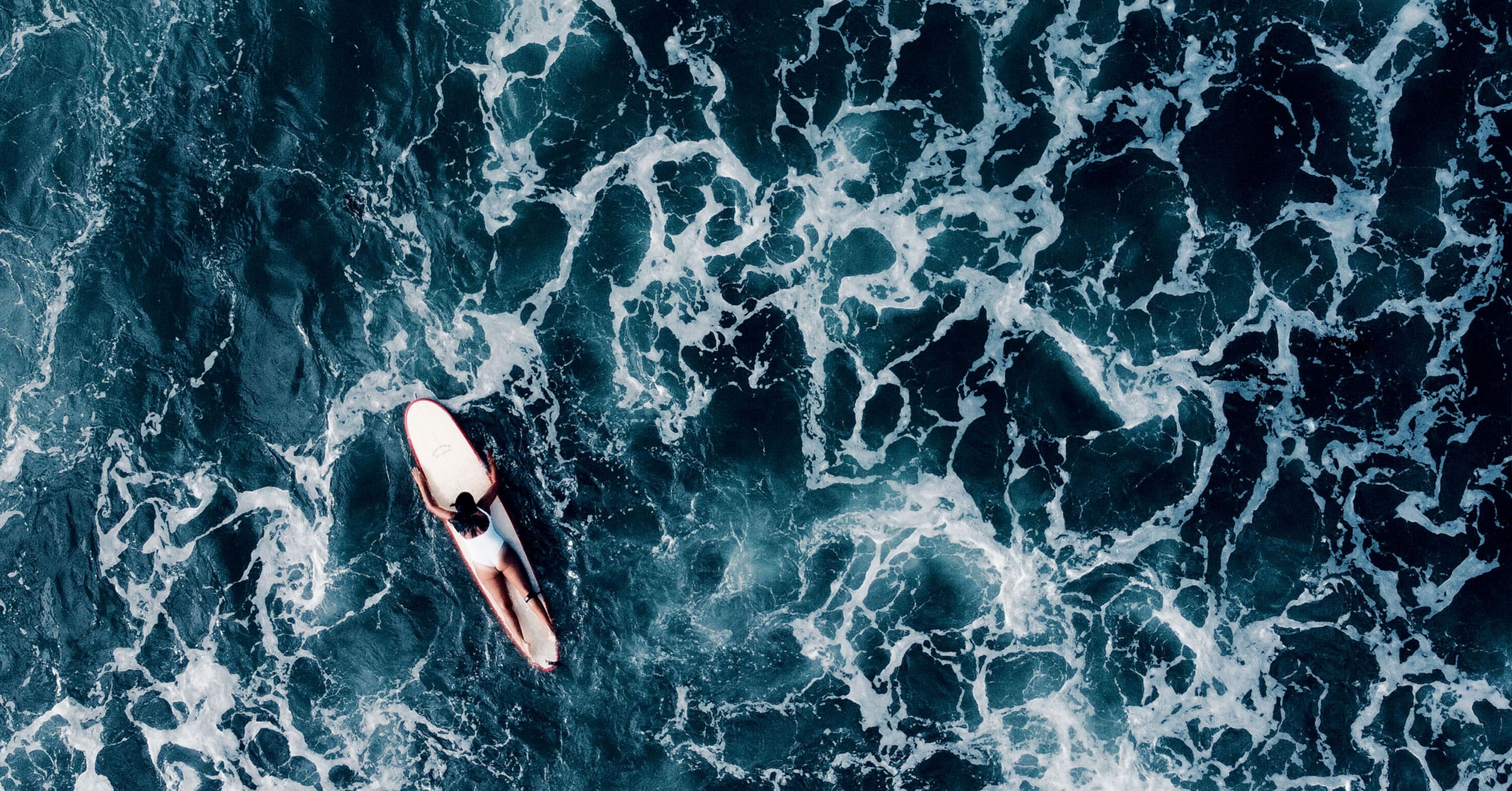Jan-Deo Duarte
Jan-Deo Duarte
During the pandemic, a wave of creative workers left the city to crash on the shores of La Union. Apol Lejano-Massebieau meets the people who chose to stay and turn ‘Elyu’ into an emerging ecological arts hub.
It’s 6:30 in the morning and I am on the San Juan Public Beach. Rolling waves crashing on the shore behind me, a gigantic metal-and-bamboo structure of interconnected spheres in front, I bob along to the 2011 Gusttavo Lima hit “Balada Boa.”
Hands up in the air and down again, a shuffling of feet. I have trouble keeping up; I’ve never done Zumba before. Things are made harder by the bulbous contraption strapped to my head, all fluorescent pink netting and wire. It reminds me of the jellyfish that come to the waters of La Union in the summertime, if those jellyfish were giants.
All around me are a bevy of women and some men also strangely attired. Most wear costumes of discarded plastic bottles that had washed up on the La Union beaches. The bottles had been cut up and assembled to make fantastical shapes. We are aliens doing our morning exercises. “Tchê tcherere tchê tchê,” Gusttavo encourages us.
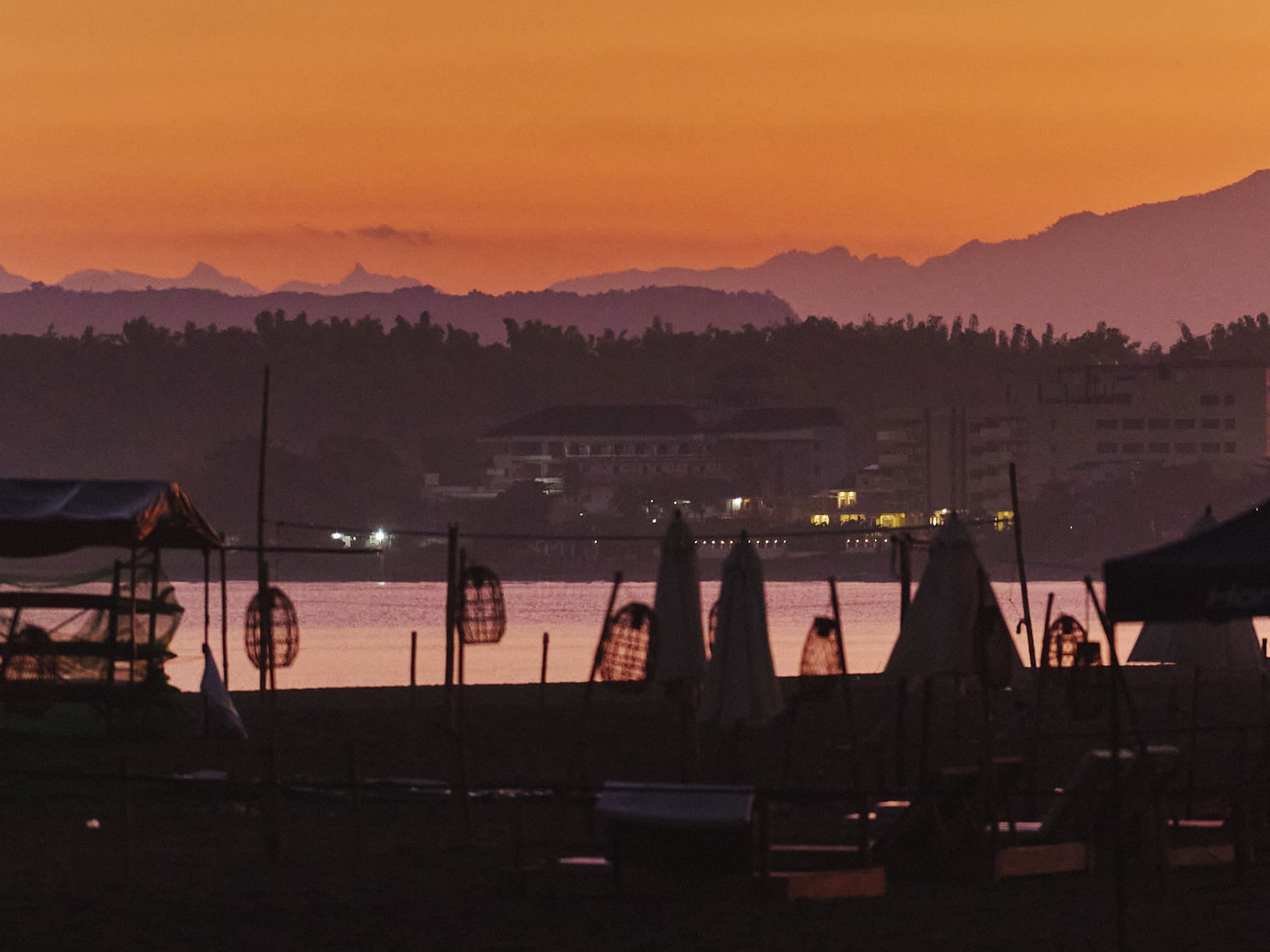
How did I end up here?
Water brings many things to La Union. The aforementioned jellyfish and plastic bottles are examples. I am another.
I arrived in 2021 for what was supposed to be a week-long visit to a friend living in Elyu, as La Union is known colloquially. After a year of Manila’s rigid quarantine restrictions, I could feel the malaise seeping into my brain, making it difficult to continue designing for my clothing line Good Luck, Humans. I needed something to shake me out of my funk. I had tried surfing for the first time the year before, during an easing of lockdown rules. I was eager to take more lessons.
Instead of just surf lessons though, I also ended up taking a house by the beach, and enrolling my child in a local school. We have been living here for almost a year now.
In the apartment compound I now call home, I am neighbors with the man responsible for the Zumba morning, the artist Leeroy New. Now if I had sort of washed up on the shores of Elyu on a whim, Leeroy arrived with a purpose, steering a giant ship.
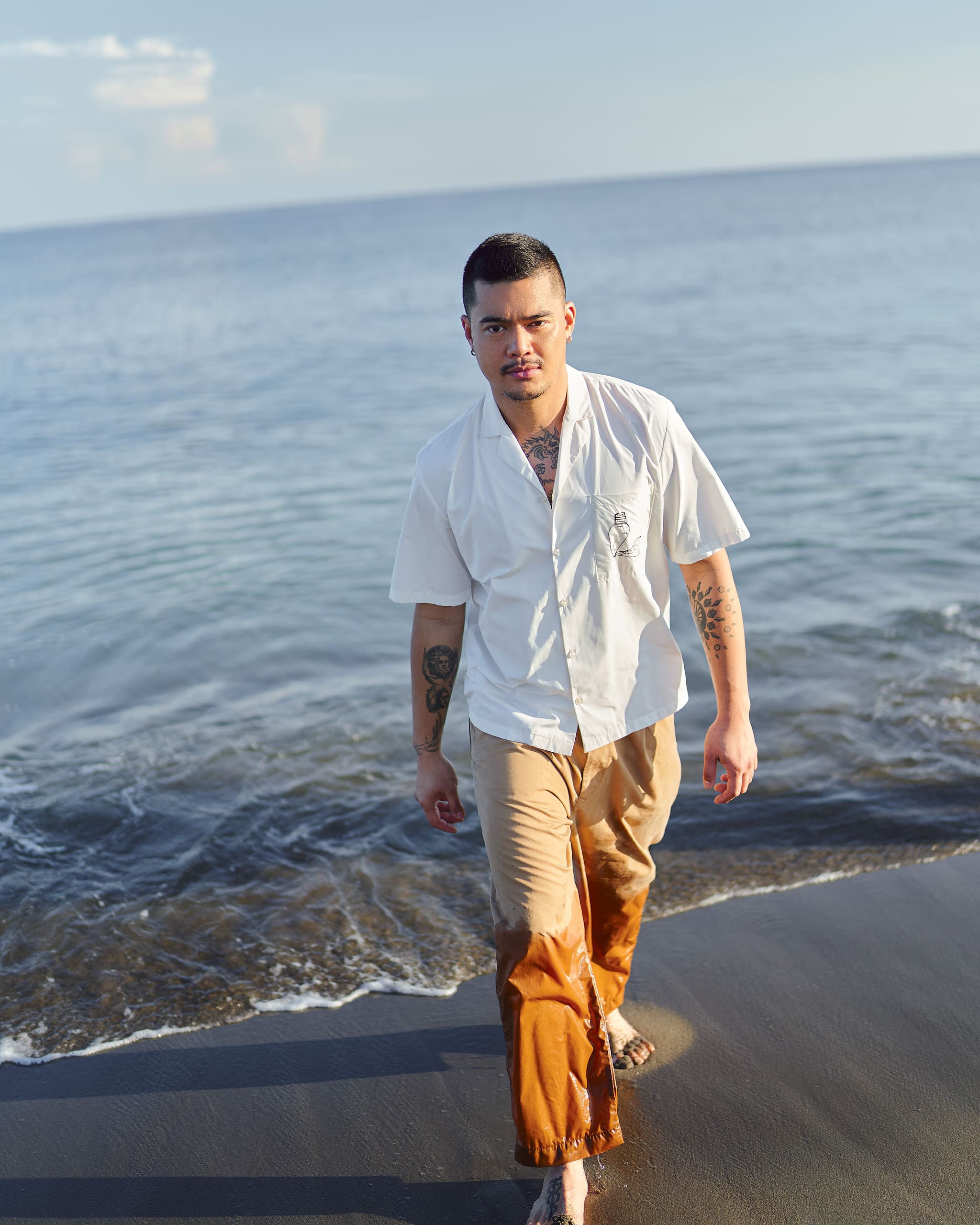
Leeroy had received a grant to build Mebuyan’s Vessel. Mebuyan, the Bagobo “mother of the underworld,” is a symbol of both fertility and death. Her many teats feed the spirits of dead infants. Leeroy had designed a functional sculpture in her name, its multiple spheres a reference to her breasts, the art it will hold an homage to the transformative power of the feminine goddess.
The sculpture was supposed to stand for one week at the Burning Man festival in the deserts of Nevada. When the pandemic hit, canceling travel and all social gatherings, Leeroy had to find another place for his work.
He came to La Union with a group of art colleagues in January 2021. “We were just exploring possibilities. We visited a few art spaces, and we had the impression that the people here were open [minded].”
Among the people he connected with were the founders of Emerging Islands or EI, an arts-for-ecology institution with an arts residency program. EI founders David Loughran and Nicola Sebastian were instrumental in helping Leeroy find the stretch of beach north of San Juan’s famous surf spots where Mebuyan’s Vessel now stands.
Leeroy is also filming a movie with frequent collaborators Ea Torrado, a dancer and choreographer, and Chino Neri, a filmmaker. It is a long-term project that begins with the Zumba session starring the men and women of Dalumpinas Oeste Eco Rangers, a local environmental group. All the costumes in the film are made from trash gathered by the Eco Rangers.

The sculpture will stand for a year in La Union, but the sculptor will stay longer. A few kilometers inland, a little away from the sea, Leeroy found a piece of land where he will build a permanent studio. “There’s a developing creative scene here,” he says, “and it’s so rewarding to support it and be part of it [Ang sarap makibahagi, mag-participate, at suportahan].”
In precolonial times, La Union was an active port of trade. Nationalities of all kinds came to this place. There were Japanese, Chinese, and Southeast Asian traders. They mingled with the Igorot and Tagalog. So deep were relations that a Japanese settlement existed in the place now known as Agoo.
Modern La Union, the 34th province of the Philippines, was established in 1850. It is “the union” of parts of the provinces of Ilocos, Pangasinan, and the Cordilleras. Three provinces were merged. La Union has historically been a safe harbor for the dayo, the Ilocano word for foreigner, immigrant, alien. People of different backgrounds have always been welcome here.
It is a Saturday and we are gathered at the Alfredo Tadiar Library in San Fernando City. It is Lung-aw, an event that combines a screening of the short film Bari-Bari by Ea and Chino, and the exhibition of works by visual artist Joar Songcuya, artist-in-residence at Emerging Islands.
Joar is a seafarer who taught himself how to paint during his long years at sea. His subject is the ocean. His two biggest works hanging at Tadiar Library are titled Pasipiko II and Atlantiko II, shades of blue applied in raw strokes that convey both strength and melancholy. He says, “The title of the show is “Lung-aw,” which means, in Ilocano, to survive or to emerge. Working on the ship for almost 10 years, I kind of emerged from the sea.”
Water is an element integral to the raison d’être of Emerging Islands. While they require no end product from the artists to whom they grant residencies, they connect them with cultural, educational, and environmental institutions in the vicinity to get them acquainted with ecological issues facing coastal areas.
Still on the importance of oceans, they describe their framework as archipelagic. David explains, “Archipelagic thinking is an old-new way of seeing the world and how we exist in it. The usual experience is that we are bound by territory: I’m Filipino, I live here. But these delineations probably don’t matter as much as the fact that the whole planet is one big archipelago.” Sam Zarandin, another EI member, adds, “When you understand the world as an archipelago, then it’s easier to understand shared problems. A coastal town in La Union will share the same problems as a coastal town in Siargao.”
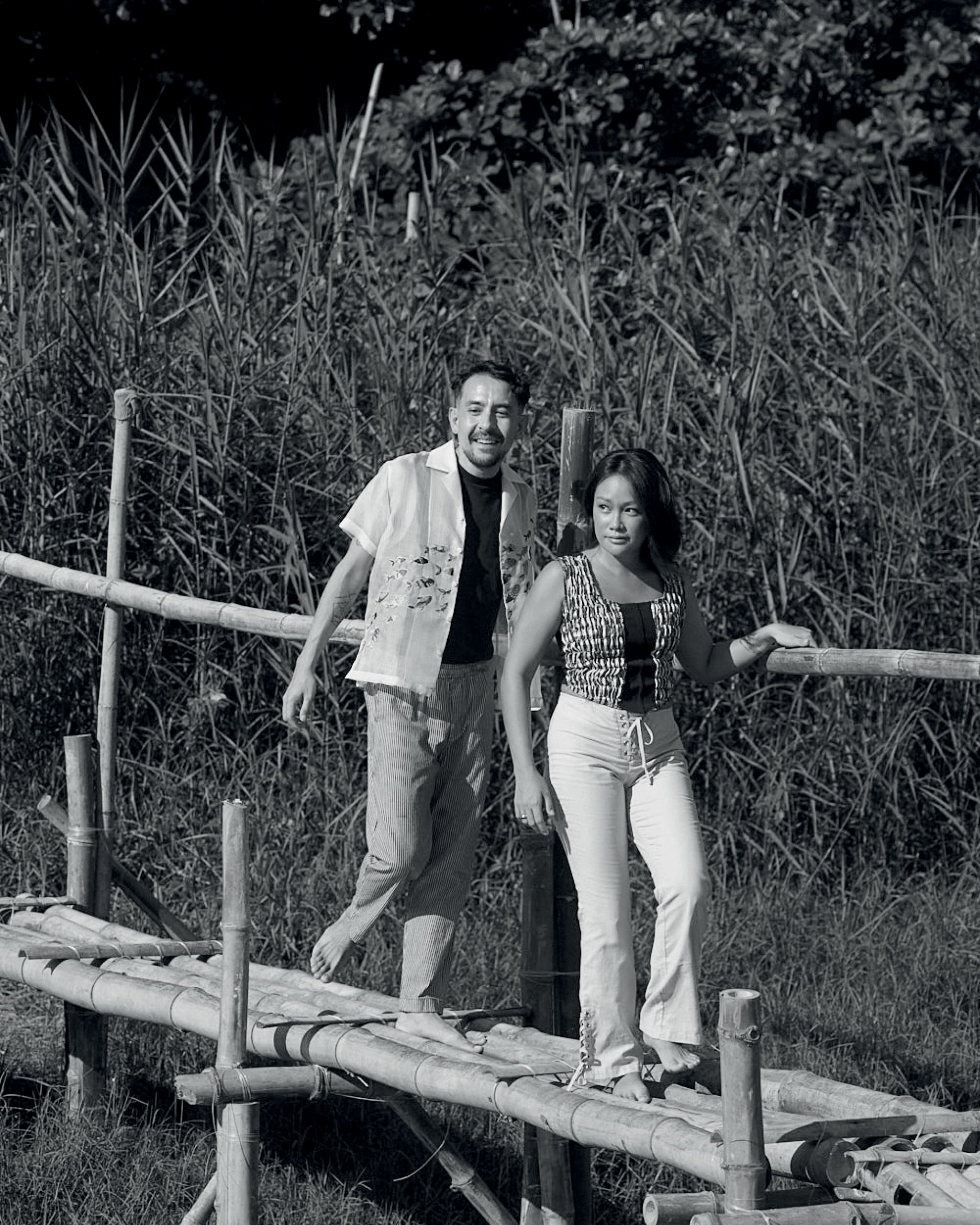
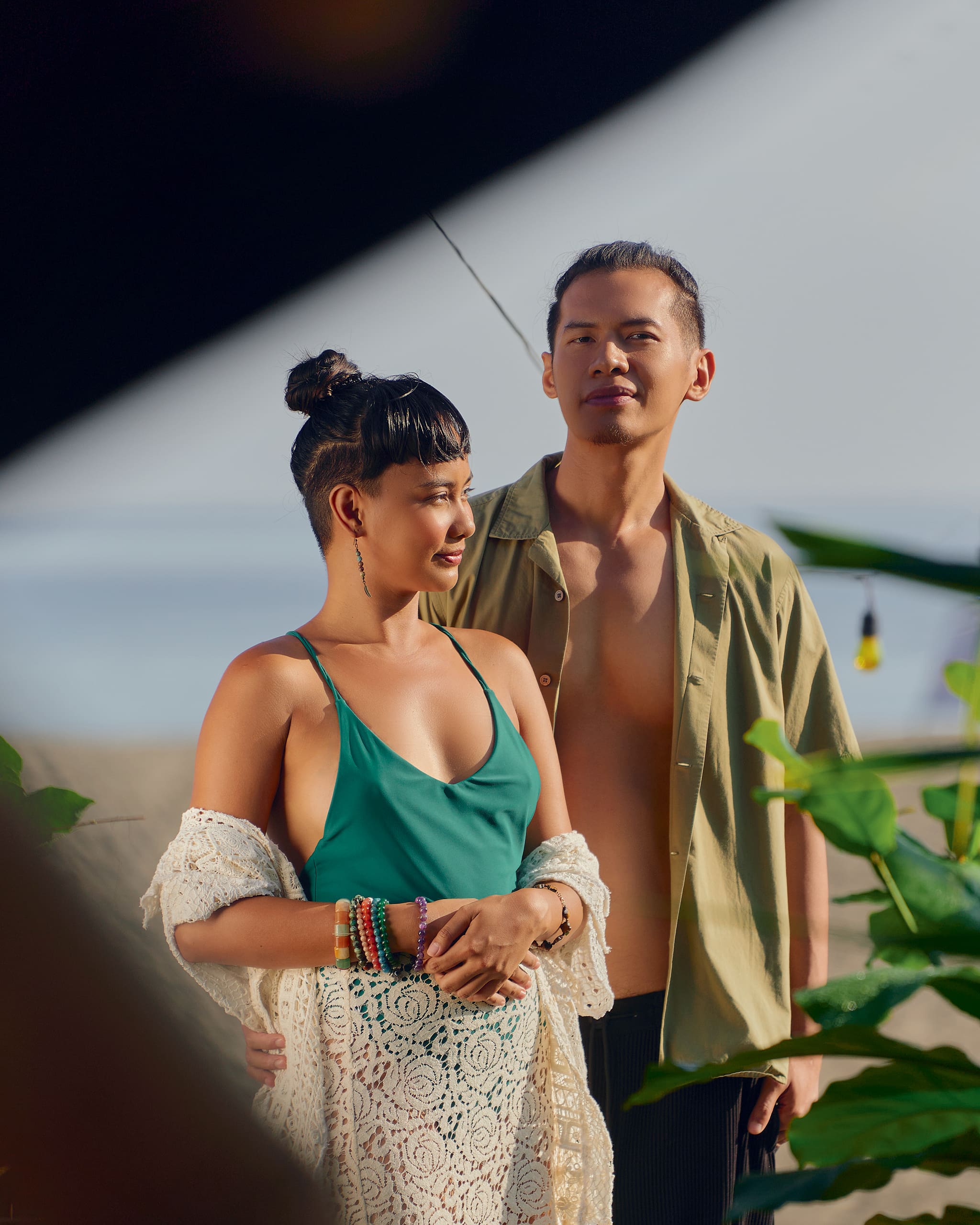
The idea for Emerging Islands came, as David describes it, “one drunky rambly night” with Nicola at the popular Elyu spot known as Great Northwest. It was late 2020, they had been in lockdown for months, and both were itching to do something. “The pandemic kind of stalled our creative careers,” he says.
Before the world went on lockdown, David was running the alternative arts space Limbo in Makati’s Poblacion district. Nicola was a writer, focused on writing pieces about the ocean. They were joined by photographer Hannah Reyes Morales, and later on by Sam, a project management specialist.
They launched their pilot season in February 2021, granting nine residencies. They have since granted more, and launched multiple arts and culture initiatives. With the aim to decentralize art, EI brings artists from the cities to provincial La Union. “We are gathering [city] people with the intent of seeing what it’s like outside,” says David. “How would you think and work out of the city?”
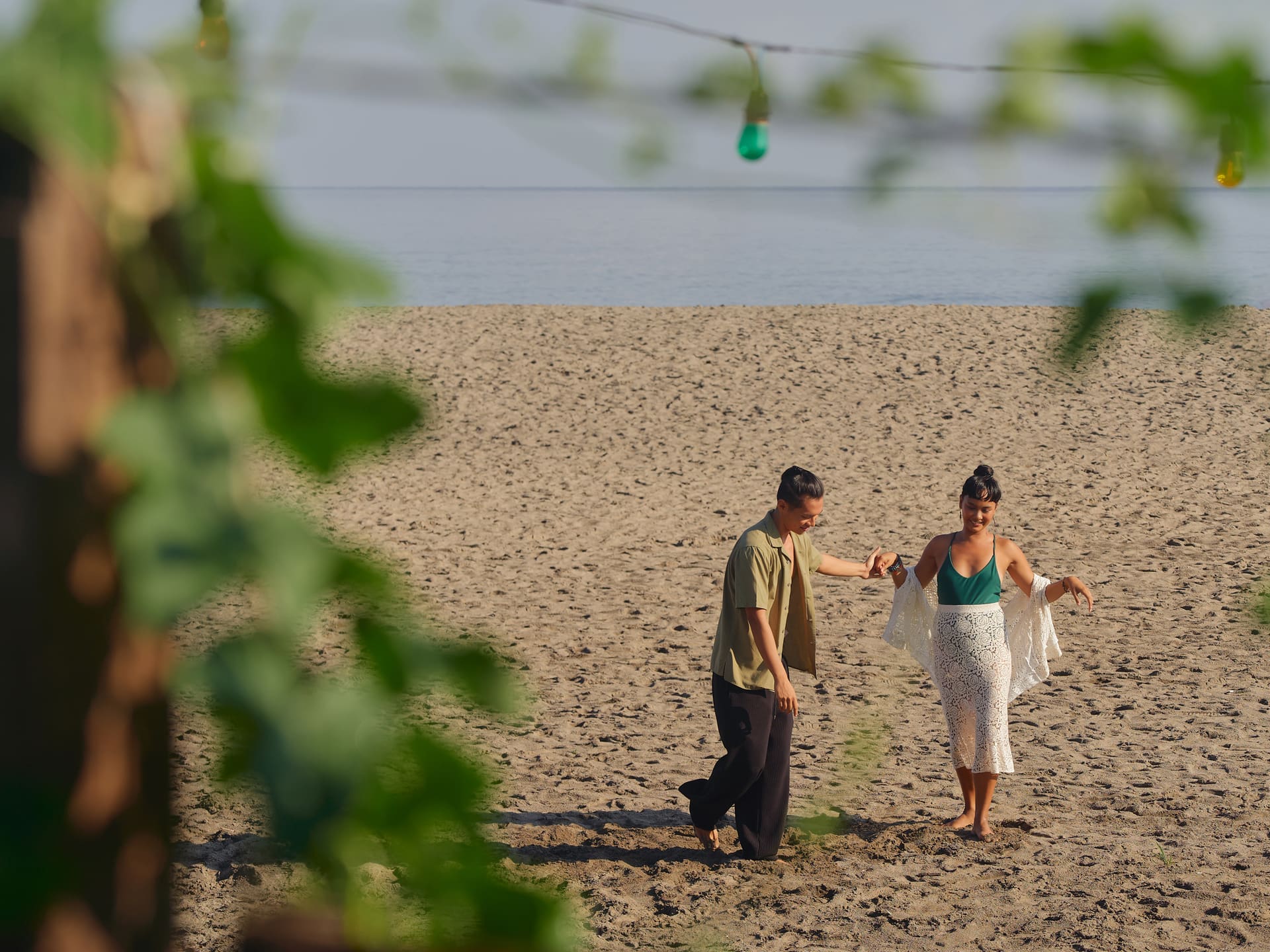
“The aim is to make the world a better place, more centered on creating solutions for the climate.”
CHINO NERI
The filmmaker Chino Neri moved to La Union in 2018. Slender, with an ascetic face of sharp planes and pronounced angles, he says that being closer to nature helps him as he aspires to “conscious filmmaking.” Chino says, “The aim is to make the world a better place, more centered on creating solutions for the climate.”
If that sounds too serious, you should watch Bari-bari, which he co-directed. He mixes dance, monologues, and costumes made by Leeroy, with unexpected touches of humor to communicate the need to protect the planet in a manner that is compelling yet not heavy-handed.
The humor again becomes evident when he tells you how he ended up in La Union after becoming infatuated with surfing. “I was staying in this transient house owned by Kuya Omar [a surf instructor] next to the Little Surfmaid. I asked him, how does one get good at surfing? He told me that Jericho Rosales, the actor, lived here for three months. Okay, I’ll do that,” he chuckles.
Chino now lives in a three-bedroom fixer-upper which, for seven years, was an abandoned house. After taking a long-term lease on it, Chino fixed the roof, built a gate, installed solar panels, and grew a garden. One of the best things about it is that it is just a few steps from a beach where he can surf.
One of my neighbors is a little girl who just turned two. Lilly Banal is already surfing. When small waves form on the beach in our backyard, her mother Eileen takes her out on a longboard. They paddle about, catch a wave, Lilly even stands sometimes.
Eileen Banal is a ballet dancer and teacher, and her husband Migs is an architect. “We know so many people like you,” Eileen tells me. “They come for the weekend, but they never leave.” Migs adds, “We call La Union the black hole. That’s our joke. Once you set foot and set up your life here, you can never leave.”
They talk from experience. The couple moved to Elyu as newlyweds in 2017, intending to stay for just six months. They were weary of life in Manila. The intense traffic they endured on their daily commutes had worn them down. Also the lack of outdoor spaces. “I was so sick of the mall,” says Eileen. The end goal was to relocate abroad. Instead, despite resident visas waiting for them in Australia, they have been living in La Union for five years now.
“We were dead serious about Australia,” says Eileen. “But then we moved here and we found that the quality of life here is just as good. We’re achieving here what we thought we’d be doing in Australia. I think even more.”
Migs says that finding like-minded people made the move easy. They were particularly inspired by Amy and Kiddo Cosio, two of the earlier migrants who came in 2012 and put up the beloved El Union Coffee. “We resonated with them because they proved you can live a simple life by the beach, put up a business and make it sustainable.”
He found his first local clients through the network of Manila transplants they met. “When Mia [Sebastian of Flotsam Jetsam hotel] found out what I did, she went, ‘Oh, you’re an architect, we need an architect! Let’s get you to do something.’ It was that quick.”
Likewise for Eileen, who put up a progressive school at the suggestion of parents they met who were looking for an alternative to the traditional modes of schooling offered in the area. The pandemic put a halt to school operations, but Eileen is considering reviving it.
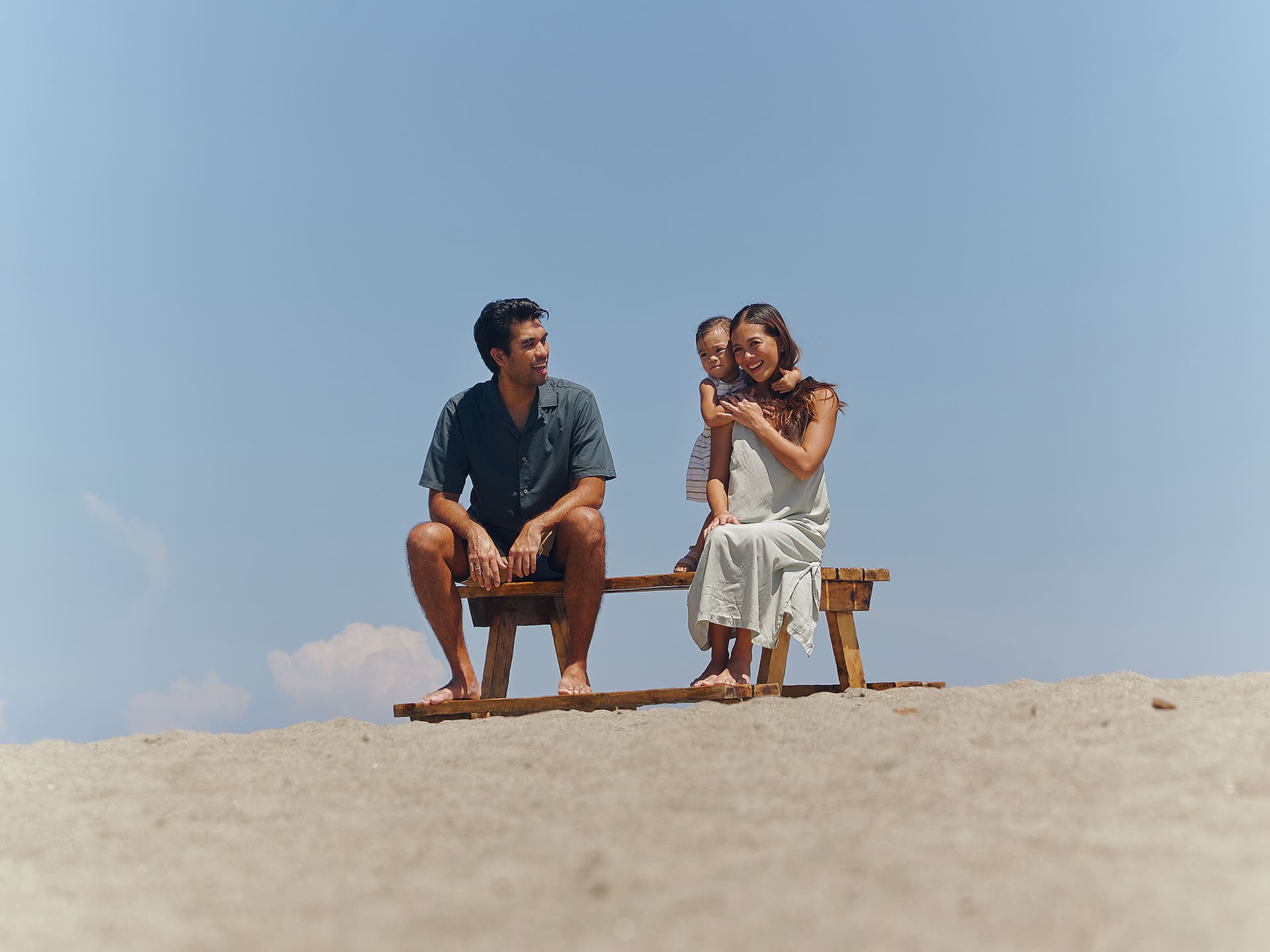
I call Nina Santamaria my “surf momma,” the woman who introduced me to the joys of the water sport. She has been coming to La Union on surf trips since 2008, when Urbiztondo was still a sleepy little fishing town.
Nina tries to explain the surf lifestyle: “There’s an expression, ‘chasing swell.’ That’s it. All your life decisions are somehow based on surfing. Travel dates to other countries shouldn’t coincide with surf season. The flexibility of your work schedule is affected. When the surf forecast is good, kailangan sibat ka. You stop going to bars at night because you’re saving money and energy for the surf weekend. Even the car you buy is related to surfing. It’s really a lifestyle that changes you.”
After twice renting a weekend house with other surfers and then years of crashing at friends’ Elyu homes, she made the move here in late 2020, after the long months of quarantine in Manila. She goes, “Imagine six months without surf. Who am I?”
Nina heads the interior design firm Grupo Santamaria. The staff is based in Makati, and they have clients all over the country. She managed the transition to living in La Union while maintaining an office in the city thanks to her get-up-and-go surf life. Systems for remote work were already in place at her firm years before the pandemic hit.
We have a joke in our apartment compound that Nina’s home is our “socio-civic center.” It’s the place where we somehow all end up gathering to hang out. She is always ready with coffee and snacks, sometimes there is beer and wine. Occasionally, we cook together.
“As an interior designer, I have an ideal vision of home in my head. I wanted to build an environment here that will generate happiness for me,” she says. “In Manila, you’re a bit lonely because people are not in the moment with you. Like you’re having coffee, but they’re on their phones because it’s also a work day. Here, you’re busy because you’re engaging with people.”
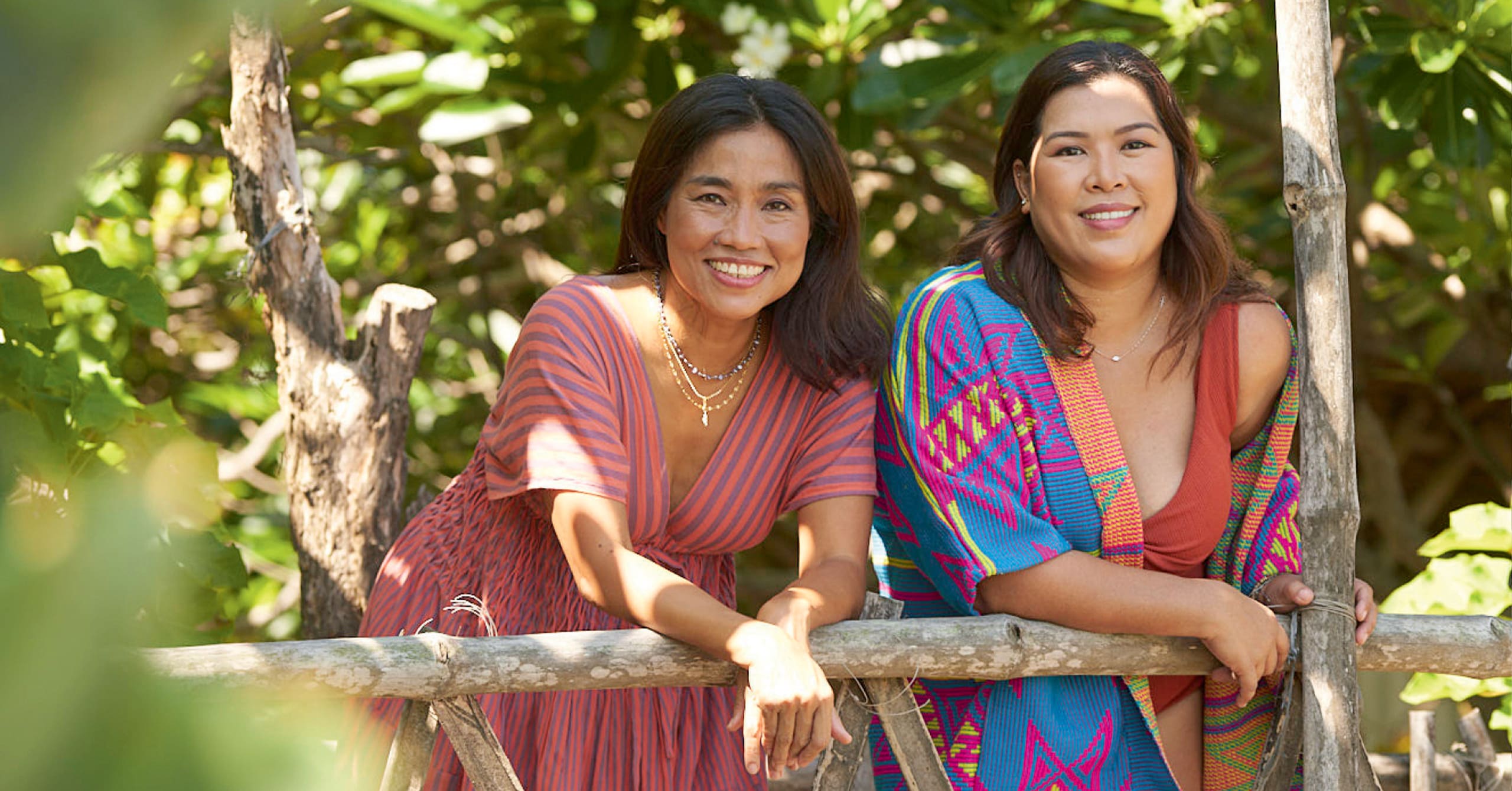
“I’m here for life, here for the space,” says Danella Yaptinchay, sitting in the living room of the apartment she rents near busy Flotsam and Jetsam, explaining why she moved to La Union from Manila. It doesn’t bother her at all, she says, to hear the music blasting from LU’s most popular nightspot. She’s in bed by 9 p.m. anyway, and up at daybreak to go surfing. She paddles out even when there are no waves, just to practice. “My day is from 10 a.m. to four p.m., before or after that, I will be surfing.”
Surprisingly chill talk coming from a serial entrepreneur. Danella has been involved in the back-end services company Full Suite, the media company Homegrown, and the HR startup Bridge Southeast Asia. Right now, she is steering Secret Sauce, a company that provides professional training. Not exactly the background you would expect from somebody who describes some of her days as, “Surf, eat, nap, with a couple of hours of work in between.”
It is when you stumble upon her website artdanella.com that you begin to understand better. In bold letters on the home page it says, “Welcome to my Made Up Museum.” It is a gallery of meditative pieces which seem to be born from a happy meeting of skill and happenstance. She pours acrylic on glass, acetate, and cloth, then waits. The colors mix organically, form shapes naturally. “It’s just play. I like watching it, and if the end result is good then cool. If not, then that’s okay, too.”
This is a woman who enjoys the process. She explains, “Do you really spend a whole eight hours productively at work? I think what you do outside the office cultivates what you try to do there. Maybe you are surfing, biking, or staring at the sea, then suddenly the idea will come.”
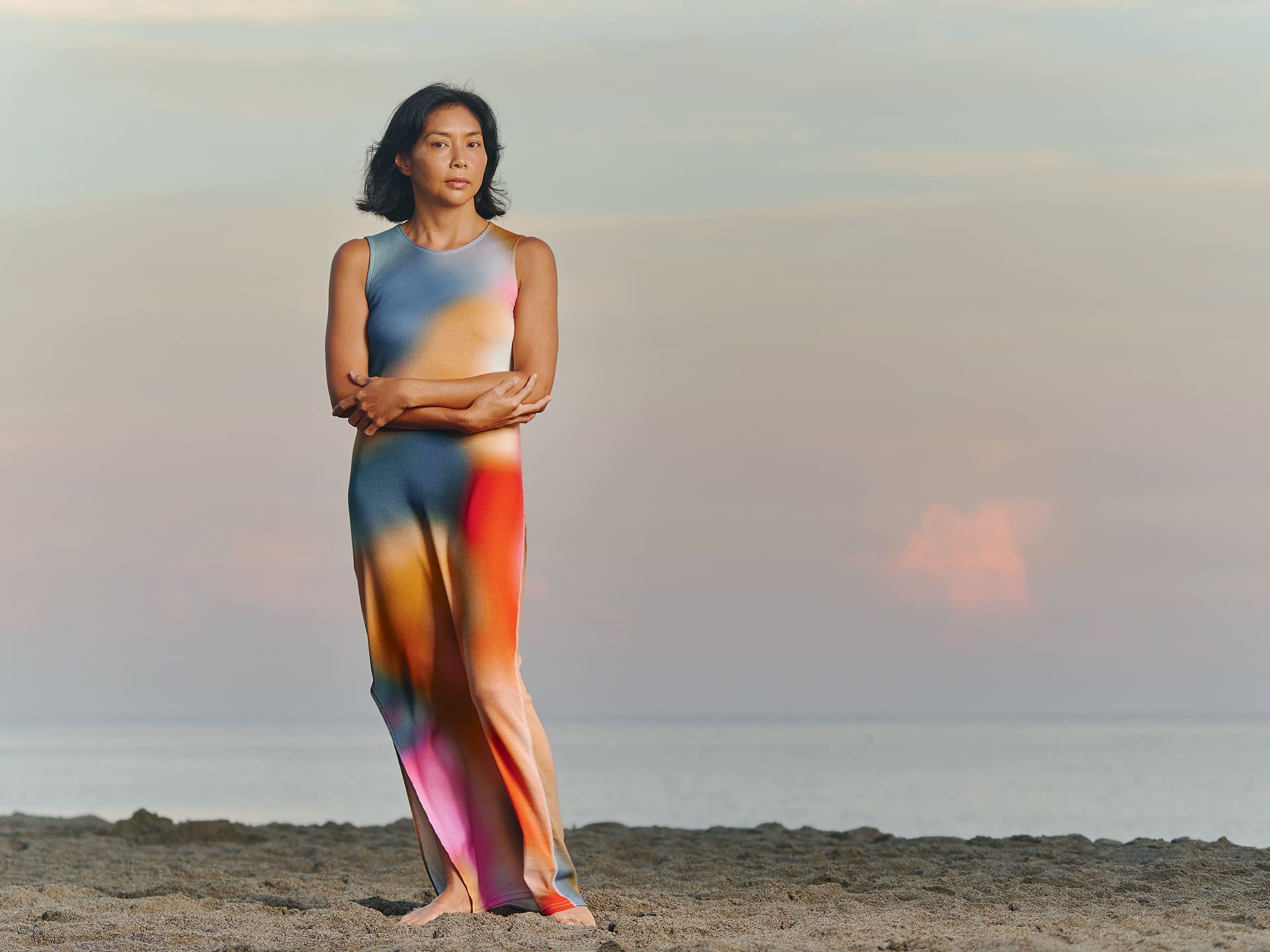
One of the more arresting images from the short film Bari-bari shows a woman dance-floating in the ocean bedecked in one of Leeroy’s plastic-bottle creations. Even more plastic bottles float around her. She is perhaps a sea goddess or an ocean creature. The debris adorns her, yet at the same time she is trapped in it. Perhaps this is also lung-aw. She will emerge, transformed.
The film’s choreographer and co-director Ea Torrado arrived in La Union a few days before the nationwide lockdown was imposed in March 2020. She packed her bags when she began to hear murmurs of what was going to happen, and went to live with her boyfriend, Chino Neri.
Ea recounts those early days in LU: “You weren’t allowed to go swimming or surfing. You were allowed to walk on the beach, but not to loiter. Still, it was a great deal compared to being in lockdown in a big city.”
As with most everyone else, she had to grieve her previous way of life. She hit pause on Daloy Dance Company, which she founded, and said goodbye to their plans which included performances abroad. In the interim, she made some personal and professional changes.
While many come to La Union to surf its waters, Ea is dancing in it. “La Union gave me so many things. I found so much personal healing, and so much material from dancing on the water, on the sand, in connection with trees.”
Always interested in alternative therapies, but reticent about revealing this to predominantly Catholic family members and dance supporters, Ea thinks that after the mental, emotional, and physical battle that was the pandemic, there’s a greater acceptance of these things.
She now openly talks about her healing sessions and wellness workshops, where she combines dance with reiki, yoga, and sound baths. As I write this, I am looking forward to attending a one-day event that Ea has organized. Called Wild, Wild Wellness, it promises, among many other things, a tarot dance party, an astrology workshop, and sunset meditation at a secluded farm in Bacnotan.
“Everybody who experiences
Nina Santamaria
this place and this environment
wants in. So how do you
explain it? I don’t really know”

For a while, there was an Instagram account based out of Bacnotan, La Union, that was starting to get famous among design enthusiasts. Called @casa.nakama, it had pictures of a house by the beach, loaded with an eclectic array of beautiful things arranged seemingly effortlessly yet very artfully. People wanted in on it. Go look now, though, and you will see that the account is empty of images.
“I took it down because people started thinking it was an Airbnb,” says the stylist Kitty Bunag, who started Casa Nakama with her best friend, the late fashion entrepreneur Mikka Padua. While the space is an actual house in Bacnotan, a municipality about 12 kilometers from San Juan’s famous beaches, Kitty says it is not open to the public. “It’s so sacred, that space,” she says. “It’s for family.” Casa Nakama is where she goes to recharge.
A sought-after design professional, Kitty needs to spend half her time in Manila to work with her clients—the retail giant SM among them—and attend to her photography studio Raw Honey Lab. By 2023, however, she aims to spend more time away from the city.
“I believe in kismet and in luck,” she says. “I also believe that when you put your foot forward, that’s when you attract things. You have to be relentless.” Because of what she did with Casa Nakama, opportunities are opening up for her in Elyu. Maybe soon she’ll be able to spend more time here. “It’s been my dream to live by the sea.”

It is past 7 p.m., on the beach in front of Mebuyan’s Vessel. I had just watched the sun set. Now I turn to look at the spectacle of the sculpture all lit up. The spheres are colored red, blue, pink, and yellow. Electronic music can be heard, as Chino, Ea, and Leeroy shoot more footage for their film.
I can see the silhouettes of people dancing inside, moving to the music. I sit this one out, as I had brought my child and two of her friends with me. They had entered the vessel earlier and climbed it; been amazed and just a little scared at how high the spheres reached. Politely feigning interest as I explained the project, they were really more captivated by Leeroy’s costumes and wanted to know if they could try them on. They’ll enjoy it when, sometime in the near future, Emerging Islands curates the spaces within Mebuyan’s Vessel and fills it with art and cultural artifacts.
We all watch the lights strobing for a bit, then the kids run off. They chase each other on the sand, with joyful sounds that are exclusive to the domain of children.
While talking to Nina, she had observed that “everybody who experiences this place and this environment wants in. So how do you explain it? I don’t really know.” At that moment, I think I began to understand why.
The Mebuyan’s Vessel film is being made with the generous help of Search Mindscape Foundation, a non-profit organization that paves the way for interaction, collaboration, and engagement in the Philippine art community.
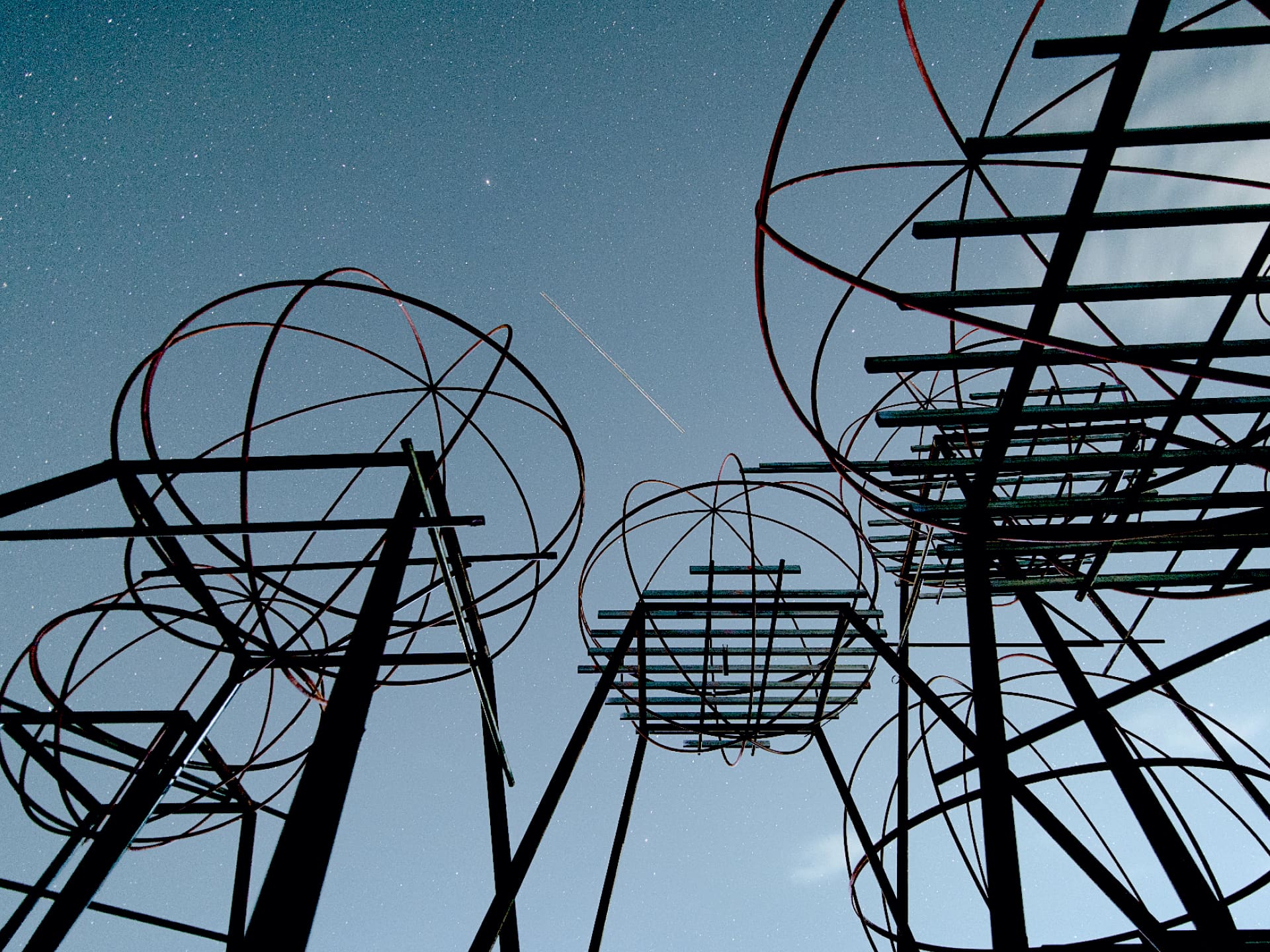
This story originally appeared in Vogue Philippines September 2022 Issue
